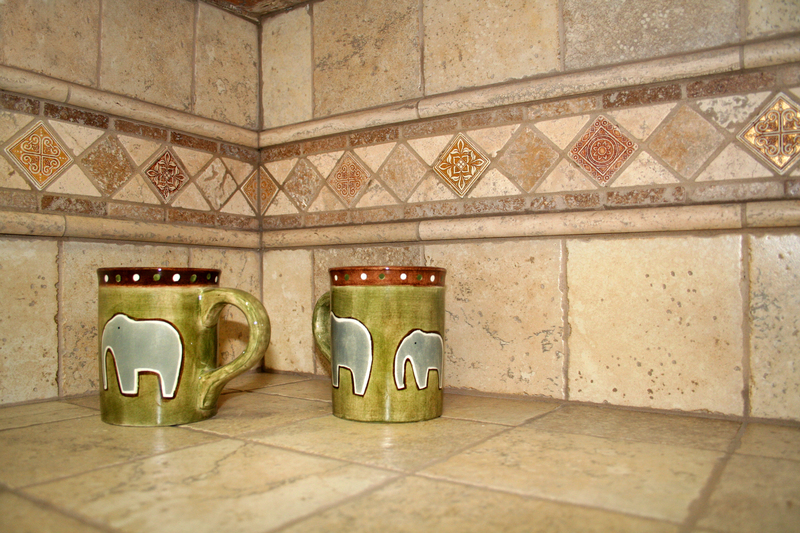Crafting Comfortable Spaces with Superior Air Quality Control
Posted on 19/08/2025
Crafting Comfortable Spaces with Superior Air Quality Control
In today's modern world, where people spend an estimated 90% of their time indoors, superior air quality control has become essential for crafting comfortable spaces. Whether you're designing your home, office, or any commercial environment, the quality of the air directly impacts health, productivity, and overall well-being. In this comprehensive guide, we will explore how to achieve optimal comfort by mastering indoor air quality control through innovative strategies, smart design, and advanced technologies.
Why Air Quality Matters in Comfortable Spaces
Air quality is not just about removing bad odors; it influences how we feel, our concentration levels, and even our long-term health. Poor indoor air quality can cause headaches, fatigue, allergic reactions, and more severe respiratory issues. On the other hand, superior air quality helps:
- Enhance comfort and relaxation
- Increase focus and productivity
- Support better sleep and overall wellness
- Reduce the risk of airborne illnesses

Main Factors Influencing Indoor Air Quality
To create truly comfortable indoor spaces, it's essential to understand and manage the factors that influence air quality:
- Ventilation: Ensures continuous exchange of indoor and outdoor air, removing pollutants and providing fresh oxygen.
- Humidity: The right humidity reduces allergens, inhibits mold growth, and keeps skin and respiratory tracts comfortable.
- Airborne Pollutants: Includes dust, pollen, smoke, volatile organic compounds (VOCs), and microbial contaminants.
- Temperature: Affects both comfort and the spread of airborne particles.
- Air Filtration & Purification: Removes particulates, allergens, and pathogens for a cleaner breathing environment.
Designing Comfortable Spaces: The Role of Air Quality Control
When crafting comfortable spaces, consider superior air quality control integral to your design from the outset. Here's how air quality ties into interior comfort:
- Healthy Building Design: Buildings designed with air circulation and purification in mind foster healthier, happier occupants.
- Smart Home Integration: New technologies empower real-time monitoring and management of air quality from smartphones or control panels.
- Natural Elements: Incorporating plants and natural materials helps absorb toxins and balance humidity naturally.
Optimal Ventilation Strategies
Proper ventilation is the backbone of indoor air quality management. Consider these tips:
- Install energy-efficient mechanical ventilators like HRVs (Heat Recovery Ventilators) or ERVs (Energy Recovery Ventilators).
- Plan for cross-ventilation by placing operable windows on opposite sides of rooms.
- Utilize exhaust fans in kitchens and bathrooms to expel moisture and pollutants.
Humidity: Balancing for Comfort
Maintaining relative humidity between 30-50% is ideal for both comfort and health. Too much humidity encourages mold and dust mites, while air that is too dry leads to skin and respiratory irritation.
- Use humidifiers in winter when heating dries the air.
- Deploy dehumidifiers in damp climates or poorly ventilated spaces.
- Leverage smart sensors to automate humidity management.
Filtration & Purification: Key to Superior Air Quality Control
To truly craft comfortable indoor spaces, go beyond basic filters. Consider premium filtration and purification systems:
- HEPA Air Purifiers: Capture 99.97% of airborne particles down to 0.3 microns, including many allergens and bacteria.
- Activated Carbon Filters: Neutralize odors and volatile organic compounds (VOCs).
- Ultraviolet (UV) Systems: Destroy airborne microbes and pathogens as air passes through HVAC ducts.
- Ionic Air Purifiers: Electrically charge particles to remove them from the air, but choose high-quality models to avoid ozone emissions.
Combine multiple layers of purification for the most comprehensive air quality control.
Technologies Revolutionizing Air Quality Management
The ongoing evolution of smart and sustainable technologies is making it easier than ever to maintain superior air quality in comfortable spaces:
Smart Air Quality Monitors
These advanced sensors detect pollutants, humidity, and even CO2 levels. They provide real-time feedback, actionable alerts, and can integrate with smart home ecosystems for automated response.
Automated HVAC Systems
Modern HVAC (Heating, Ventilation, and Air Conditioning) systems can adjust settings based on occupancy and air quality sensor feedback. Wi-Fi enabled thermostats and air handlers ensure efficiency, comfort, and continuous monitoring.
UV-C Air Treatment
- In-duct and standalone UV germicidal lamps neutralize airborne bacteria, viruses, and mold spores.
- Regular maintenance is essential to ensure consistent performance.
Eco-Friendly Solutions
Sustainable design choices can lead to both better air quality and lower environmental impact:
- Choose low-VOC paints, adhesives, and furniture to minimize chemical emissions.
- Opt for natural fibers and materials that don't off-gas harmful compounds.
- Plant-based purification (adding houseplants) can improve oxygen levels and absorb mild toxins.
Best Practices for Homeowners and Facility Managers
Achieving and maintaining cutting-edge air quality control is easier with established routines and a proactive mindset. Here's how to sustain superior air quality in any space:
Routine Maintenance
- Change HVAC filters every 1-3 months, or as recommended.
- Clean air ducts annually to prevent buildup of dust and biological residue.
- Monitor appliance exhausts for obstructions and leakages.
Daily Habits for Better Indoor Air
- Open windows periodically for fresh air, if weather and outdoor air allow.
- Avoid indoor smoking or burning candles frequently.
- Store chemicals, paints, and solvents in well-ventilated or external areas.
- Clean regularly to reduce dust, pet dander, and other particulates.
Managing Allergens and Chemical Pollutants
- Use allergen-proof mattress and pillow covers in bedrooms.
- Vacuum with HEPA-equipped machines.
- Keep plants healthy and avoid overwatering to prevent mold growth.
Link Between Air Quality, Health, and Comfort
Multiple research studies underscore the connection between air quality control and occupant well-being. Benefits include:
- Fewer respiratory illnesses (e.g., asthma, allergies, infections)
- Better cognitive performance among students and office workers
- Improved sleep and daytime alertness
- Reduced stress and emotional fatigue
How to Design Spaces for Superior Air Quality Control
Creating the perfect blend of comfort and purity in your home or workspace begins with thoughtful planning and execution:
Architectural Considerations
- Incorporate operable windows and skylights for natural ventilation.
- Use open floor plans to maximize airflow.
- Design with orientation in mind to leverage prevailing breezes and reduce reliance on mechanical cooling.
Material Choices
- Select flooring, wall coverings, and furnishings that are certified low-emission or non-toxic.
- Avoid synthetic carpets in high-traffic areas; opt for natural fiber rugs or hard flooring.
Smart Zoning Systems
- Deploy zoning in larger buildings to control temperature, ventilation, and purification based on real-time needs in different areas.
Biophilic Design
- Integrate indoor gardens or green walls for active air filtration and aesthetic comfort.
- Maximize daylight to reduce dependence on artificial lighting and its associated heat output.
Case Studies: Real-World Examples of Superior Air Quality Solutions
Residential Success Story
A family in Seattle renovated their 1950s home, installing a state-of-the-art HRV system, hypoallergenic flooring, and smart air quality sensors throughout. The result was a healthier home environment with consistently high air quality ratings, improved sleep, and reduced respiratory symptoms for allergy-prone children.
Commercial Office Upgrade
A downtown co-working center invested in advanced air filtration, humidity controllers, and automated CO2 sensors across all shared offices. This not only enhanced comfort and focus but also became a key differentiator during the COVID-19 pandemic, attracting tenants seeking a safe return to workspace environments.
Common Myths about Air Quality & Comfort
- Myth: "A clean home always has good air."
Reality: Even spotless homes can harbor invisible VOCs, dust, and allergens. Regular monitoring and ventilation are necessary. - Myth: "Air purifiers alone solve all air quality issues."
Reality: Purifiers help, but whole-building strategies (ventilation, humidity, materials) are crucial for superior comfort. - Myth: "Houseplants act as complete air filters."
Reality: Plants can improve air slightly but can't replace mechanical filtration or ventilation for significant pollutant loads.

Future Trends in Comfortable Living and Air Quality Management
The future of indoor comfort and air quality is exciting and promising:
- Integrated wellness systems merging lighting, air, temperature, and sound for holistic comfort.
- Growth in AI-driven smart home ecosystems that predict and optimize conditions based on learning occupant patterns.
- Innovations in sustainable architecture that passively purify and circulate air using advanced materials.
- Affordable, networked air monitoring for every room, not just communal spaces.
Conclusion: Making Every Space a Comfort Zone
Incorporating superior air quality control is fundamental for crafting comfortable spaces where people can thrive. Modern technology, thoughtful design, and proactive habits combine to elevate well-being, productivity, and the overall enjoyment of interior environments. Start your journey towards healthier, more refreshing air quality today--your comfort and future health depend on it.
For further information on specific technologies, best products, and design guidelines, consult with air quality professionals or eco-friendly designers who stay up-to-date with the latest in air comfort innovation.



